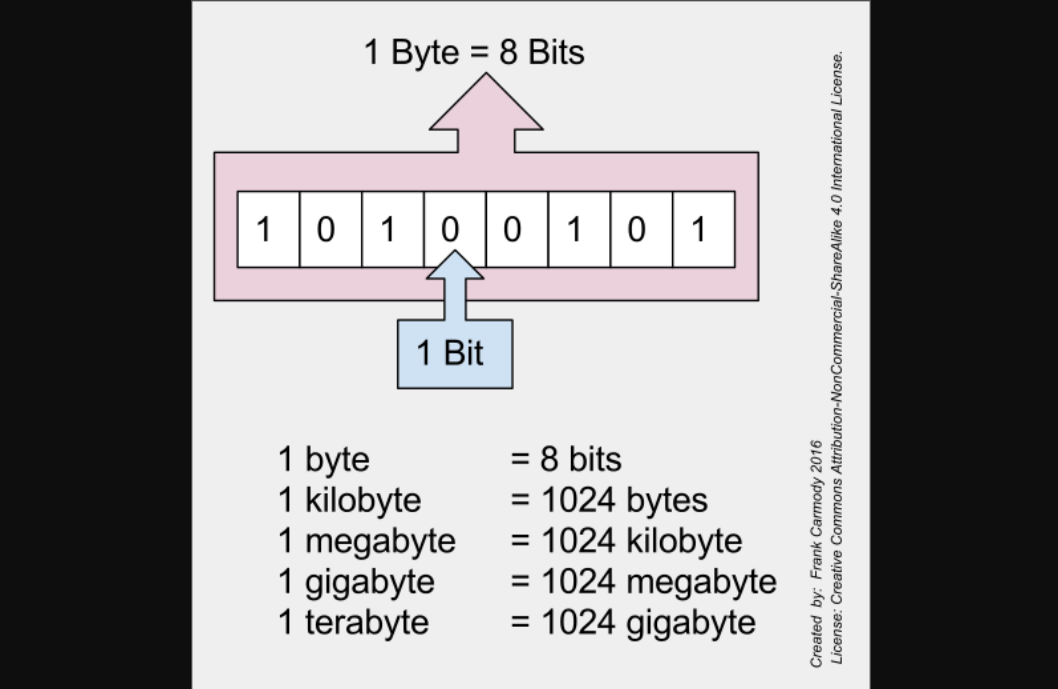How Many Bits Are There in a Byte?

Published on March 24, 2024
In the realm of computing and digital information, understanding the basic units of data measurement is fundamental. Among these units, the bit and the byte stand out as the most elementary, yet vital, components. This article aims to elucidate the relationship between these two units, answering the seemingly simple question: How many bits are in a byte? Through a formal and informative exploration, we will delve into the definition of bits and bytes, their historical background, and their significance in computing today.
Here are the facts:
- 1 byte = 8 bits
Introduction to Bits and Bytes
At the most basic level, a bit, which is a contraction of "binary digit," is the smallest unit of data in computing and digital communications. A bit can have a value of either 0 or 1, representing the binary system's two possible states. This binary system forms the foundation upon which all digital computing systems are built, given its simplicity and efficiency in electronic circuitry, where states can be easily represented by on (1) and off (0) signals.
A byte, on the other hand, is a unit of digital information that historically has been the amount of data used to encode a single character of text in a computer. Although the size of a byte can vary depending on the computing architecture, it is universally accepted today that a byte consists of eight bits. This standardization is crucial for ensuring compatibility and interoperability among various computing systems and devices.
Historical Background
The byte was not always standardized to eight bits. Initially, the size of a byte varied depending on the hardware design of the computer system, ranging from as few as four bits to as many as 16 or more bits. The choice of byte size was influenced by the specific needs and capabilities of the hardware, including memory storage efficiency and processing power.
The standardization of the byte as eight bits can be largely attributed to the widespread adoption of the IBM System/360 in the mid-1960s. This family of mainframe computers used an eight-bit byte, which proved to be a practical size for representing a wide range of characters in text data while maintaining efficient use of memory and processing resources. Over time, as the IBM System/360 became a dominant computing platform, the eight-bit byte became the de facto standard.
Significance in Computing
The significance of the eight-bit byte in computing cannot be overstated. This standardization has enabled the development of a vast ecosystem of software and hardware that is compatible across many different types of computing devices, from mainframe computers to personal computers and mobile devices. Each byte can represent 256 different values (2^8), which is sufficient for representing the entire ASCII character set, including letters, digits, and various symbols, thereby facilitating text processing and data storage.
Moreover, the concept of the byte as a collection of eight bits is integral to the development of more complex data types and structures. For example, larger units of data measurement, such as the kilobyte (KB), megabyte (MB), gigabyte (GB), and so on, are based on multiples of bytes, enabling the quantification and manipulation of large sets of data in a standardized and comprehensible manner.
The Takeaway
In conclusion, a byte consists of eight bits. This standardization has been a cornerstone in the evolution of digital computing, enabling the efficient representation, processing, and storage of data across diverse computing systems and devices. The bit, as the fundamental unit of digital information, and the byte, as a practical aggregation of bits, together form the bedrock upon which the digital age is built. Understanding the relationship between bits and bytes is essential not only for those involved in computing and information technology but also for anyone living in our increasingly digital world. This knowledge helps demystify how digital devices store and process the vast amounts of information that define the modern era.
Category: Technology